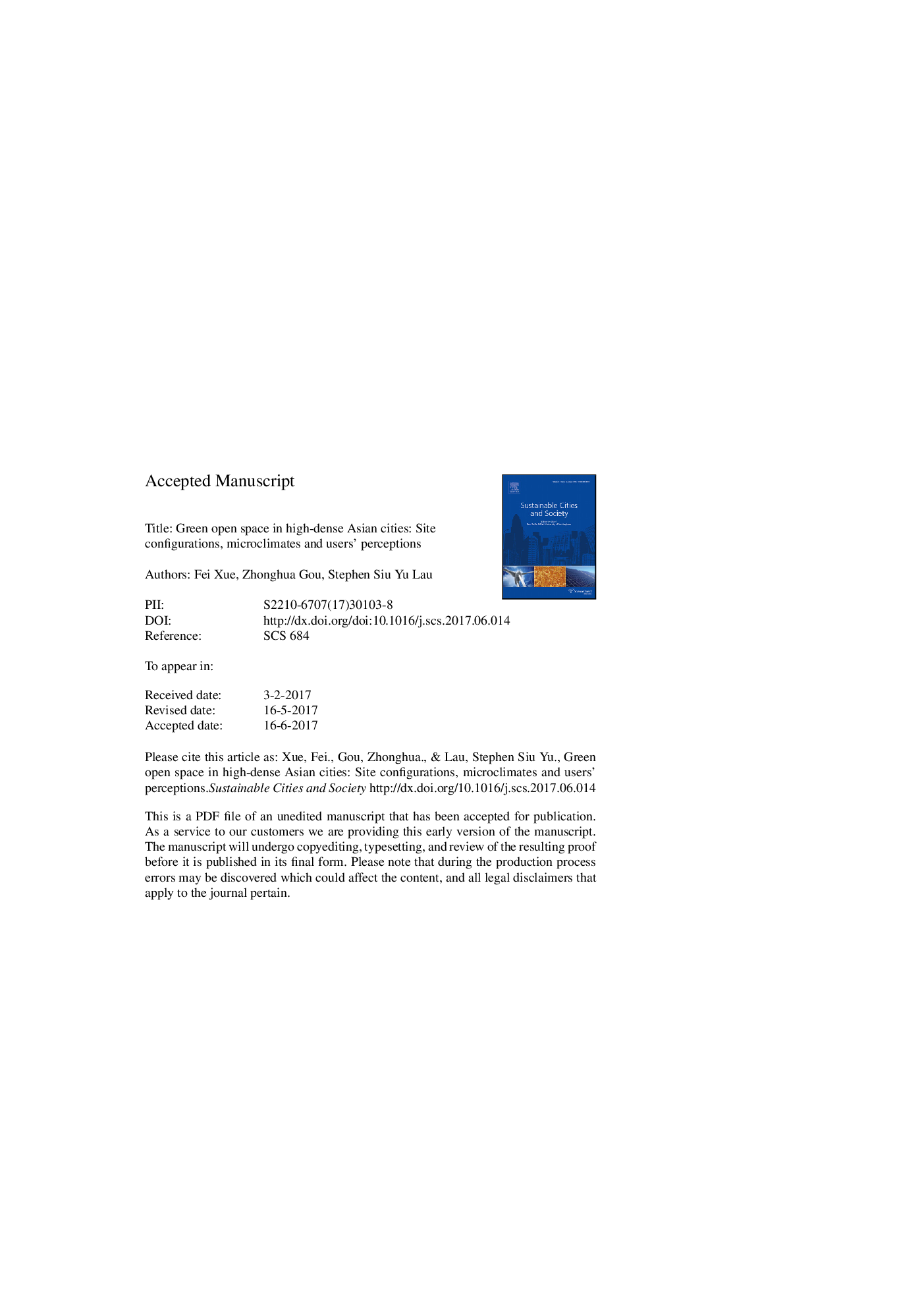| Article ID | Journal | Published Year | Pages | File Type |
|---|---|---|---|---|
| 4928178 | Sustainable Cities and Society | 2017 | 33 Pages |
Abstract
There is a growing concern in high-dense Asian cities that the large population and limited green open space might cause negative influences on human health and well-being. The objective of this paper is to investigate: (a) to what extend the site configuration could ameliorate the outdoor microclimate; (b) the relationship between the subjective environmental perception and the objective site configuration; and (3) design guidelines and planning practices based on linking the site configurations, microclimate conditions, and users' perceptions. The methods are mainly based on microclimate measurement and self-administered questionnaire survey in selected green open spaces in Hong Kong and Singapore. It is found that the level of space enclosure and the greenery density are significantly associated with outdoor microclimate conditions and use behaviours, such as visit pattern, sensation, and healing evaluation of the green open space in dense urban contexts. The high-density urban morphology could become advantageous in the tropical and subtropical Asian cities if it is well planned and designed. The typology of green open space being embedded in buildings could be a sensible design solution for land efficiency, microclimate optimization and positive use experience.
Related Topics
Physical Sciences and Engineering
Energy
Renewable Energy, Sustainability and the Environment
Authors
Fei Xue, Zhonghua Gou, Stephen Siu Yu Lau,
